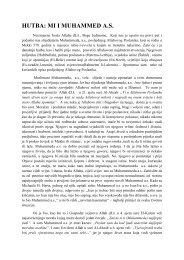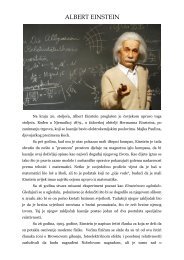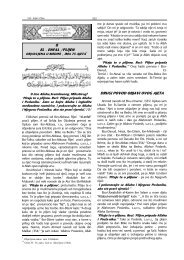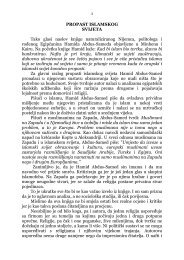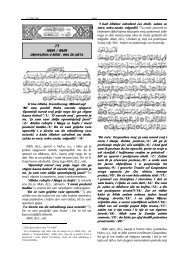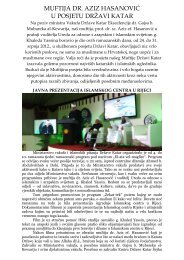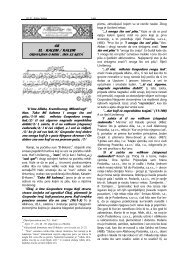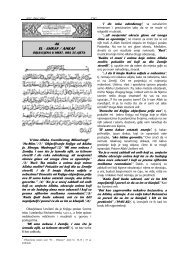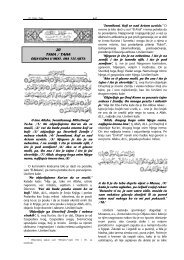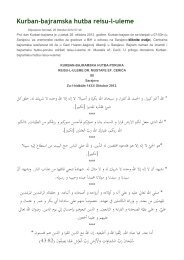ZAGREB MOSQUE - Islamska zajednica u Hrvatskoj
ZAGREB MOSQUE - Islamska zajednica u Hrvatskoj
ZAGREB MOSQUE - Islamska zajednica u Hrvatskoj
Create successful ePaper yourself
Turn your PDF publications into a flip-book with our unique Google optimized e-Paper software.
Oriental philologist and diplomat<br />
Franz Dombay published<br />
in Zagreb the biography of<br />
God’s emissary Mohammed,<br />
as the pioneering work of European<br />
Oriental Studies. He<br />
described Islamic teaching in<br />
an objective way without the<br />
usual polemical discourse. The<br />
turning-point occurred in 1878<br />
following the Austro-Hungarian<br />
annexation of the westernmost<br />
Ottoman province of<br />
Bosnia and Herzegovina. From<br />
that point, Bosnia and Herzegovina<br />
was within the framework<br />
of the various regions<br />
comprising today’s Republic of<br />
Croatia. The inclusion of Bosnia<br />
and Herzegovina within the<br />
Habsburg Monarchy at the end<br />
of the 19 th century represented<br />
a break with the centuries-old<br />
state, legal and cultural barriers<br />
between Christians and Muslims<br />
in these regions. It was<br />
the beginning of the gradual<br />
formation of a specific Muslim<br />
community in Zagreb, together<br />
with its religious and attendant<br />
social institutions. The first<br />
Muslims in Zagreb after 1878<br />
were young men from Bosnia<br />
and Herzegovina of various<br />
professions who came looking<br />
for job; a special group was<br />
10 10 11 comprised of Muslim pupils<br />
and students at Zagreb University,<br />
who left a significant<br />
mark in Croatian public and<br />
cultural life at the end of the<br />
19 th century. These beginnings<br />
of a Muslim community<br />
are witnessed by the fact that<br />
the first Muslim was buried in<br />
the Zagreb Mirogoj cemetery<br />
in 1883; his tomb marked the<br />
start of the oldest Muslim cemetery<br />
in central Europe. A special<br />
feature of the cemetery is a<br />
two-metre high Islamic monument<br />
from 1873, outstanding<br />
in its beauty and detail.<br />
The census of 1910 recorded<br />
the existence of a small<br />
35-strong Muslim community<br />
in Zagreb which grew to 2000<br />
permanent inhabitants in 1941.<br />
The rise of the Muslim community<br />
in Zagreb created a<br />
need for a legal framework as<br />
a prerequisite for the formation<br />
of a permanent Islamic community,<br />
together with its religious,<br />
cultural and educational<br />
institutions. Therefore in 1916,<br />
the Croatian Sabor (Parliament)<br />
passed “The Act of Recognition<br />
of Islamic confession in<br />
the Kingdoms of Croatia and<br />
Slavonia”, which guaranteed<br />
Islam the same legal protec-<br />
Nišan (stonetomb) of the Ferhatović family in the Mirogoj cemetery<br />
from 1893





